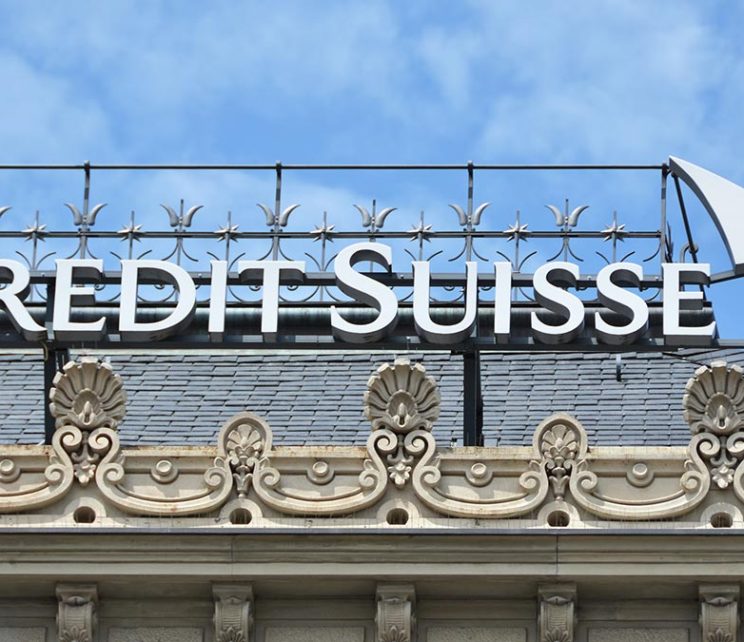
Mainstream Online Web Portal
LoginInvestors can view their accounts online via a secure web portal. After registering, you can access your account balances, periodical statements, tax statements, transaction histories and distribution statements / details.
Advisers will also have access to view their clients’ accounts online via the secure web portal.
The Point
Quick, actionable insights for investors
Income and Fixed Interest

Why Credit Suisse is a wake-up call for Australian fixed income investors
There is anger among Credit Suisse bondholders who’ve been wiped out as part of the bank’s rescue plan. But there are also important lessons for Australian fixed income investors. Pendal’s AMY XIE PATRICK explains.
SOME $A25 billion worth of Credit Suisse “additional tier one” (or AT1) bonds have been written down to zero value as part of a rescue deal that favoured equity shareholders.
That’s caused anger among bondholders who have lost their money – and fears of wider fallout among investors around the world.
Are broader fears justified? What can Australian fixed income investors learn from the crisis?

Amy Xie Patrick: Prepare for likely recession with long-duration bonds
Play podcastAmy Xie Patrick: Prepare for likely recession with long-duration bonds
An economic recession is highly likely in 2023, says Pendal’s head of income strategies, Amy Xie Patrick.
How should investors be positioning their portfolios? Long-duration, high-quality government bonds are easy decision, says Amy in her latest fast podcast.
Regardless of a mild or deep recession, bonds should rally when recessions hit, she says.
“Being in duration, or government bonds, should be the crux of your portfolio decision this year.
“Compared to a year ago, bonds are now more attractive in terms of income stream versus other risky assets like equities.”
But it shouldn’t be a set-and-forget strategy. “We fear that 2023 will be just as volatile an environment as 2022.
“So putting a larger weight to fixed income and putting it with an actively managed strategy that has proven to be tactical and agile through market volatility will be key.”

The signals that will bring interest rate hikes to an end
Play podcastThe signals that will bring interest rate hikes to an end
What signs do central banks need to see before they stop hiking?
“The US Fed is looking for inflation not only peaking but coming down very convincingly to its 2% target,” says our head of income strategies, Amy Xi Patrick in a new fast podcast.
“Wage growth in Australia is only at around about 2.5% to 3%. The RBA is comfortable for it to go up to 3.5%, maybe even temporarily to 4%.
“Wage growth in the US, however, is hovering at about 5.5% to 6%, which is clearly not consistent with a 2% inflation rate.
“This means inflation will be stickier than the market expects. Central banks may slow down hikes, but they will be hiking for longer next year than the market expects, says Amy.
Higher-quality fixed income assets will help offer some buffer for future volatility, she says.

Fast podcast: Why bonds look compelling towards mid-2023
Play podcastFast podcast: Why bonds look compelling towards mid-2023
There are signs that inflation has peaked and is due to come off in the next few quarters, says Oliver Ge, an assistant portfolio manager with our income and fixed interest team.
“That would invariably take us to a position, maybe in Q2 2023, where it looks quite compelling to own bonds,” says Oliver in our latest fast podcast.
“At that point you’d already see inflation pressures come off and growth indicators start to materially deteriorate.
“Then central banks will in all likelihood tilt their reaction function to be more benign, more dovish.
“They’re not accelerating, there likely won’t be more hikes. That environment is conducive to owning bonds.
“You’re looking at returns of five to six per cent per annum at that point.”

Fast podcast: What the Budget, inflation and rates mean for bonds
Play podcastFast podcast: What the Budget, inflation and rates mean for bonds
What do this week’s Budget and inflation numbers — and next week’s likely 25-point rate rise — mean for 2023? And the role of bonds in portfolios?
“The key takeaway I have from the last couple of days is this inflation issue is not going to solve itself quickly enough to call an end to rate hikes anytime soon,” says Pendal’s head of government bond strategies Tim Hext in a new fast podcast.
“We are getting the ingredients — particularly globally more so than Australia — where in the second half of next year you could be getting a lot of weakness globally feeding through to the need for lower rates.
“My message — and this has been a consistent message for a number of months now — is start to think about getting some bonds in your portfolio as a defensive instrument.
“I don’t think they’re necessarily going to rally hard in the near term. But if you can own those 10-year bonds in Australia at 4% on a two or three-year outlook, I think you’re going to do well out of them.
“And they’re going to give you that buffer should the slow-down prove to be stronger.”

Amy Xie Patrick: Why it’s a myth that you shouldn’t buy bonds in a hiking cycle
Play podcastAmy Xie Patrick: Why it’s a myth that you shouldn’t buy bonds in a hiking cycle
Bonds can be an appropriate investment in a hiking cycle – as long as you know what to look for, argues Pendal’s head of income strategies Amy Xie Patrick.
“It’s a common misconception that you shouldn’t buy bonds in a hiking cycle,” says Amy.
“In a lot of hiking cycles, bonds actually do okay on a total return basis – that is, the income you get from the coupon on those bonds, as well as their potential to gain a little in terms of the capital price.
“That’s usually because most hiking cycles are fairly well flagged. The difference with this hiking cycle is the central banks left it too late and now have to catch up.
“Even though central banks may need to keep hiking, now their mantra is well flagged so there’s hope bonds can do better in the second half of the cycle.
“It does mean you probably want to look at having bonds in your portfolio as a defensive pillar, more towards the longer end of curves.”

FAST PODCAST: Where we are in this interest rate cycle
50-point rate rises are probably over for now in Australia, but investors should watch for lag, says Pendal’s Tim Hext in our latest fast podcast.
“Firstly, it takes several months for a rise to feed through to your mortgage. So given they only started in May, the full impact of rate rises won’t be felt until the end of the year around Christmas.
“The RBA will probably do two more 25s this year. They might put in a third to 3.1%, but let’s call it 3%.
“I think then they’ll sit back and see what impact it’s had. Of course in 2023 you’re going to see a lot of fixed-rate mortgages rolling into floating rates, so there’s a hell of a lot of tightening yet to happen.
“Secondly, on the goods inflation side there’s a huge amount of evidence that we’ve seen the peak in the US.
“There’s every chance we’ll get some negative CPI US prints. This doesn’t mean inflation’s over. It doesn’t mean they’re going to cut rates. But that certainly takes the pressure off.”

AMY XIE PATRICK: China’s going lower on rates. Here’s what it means for investors
Play podcastAMY XIE PATRICK: China’s going lower on rates. Here’s what it means for investors
As the West hikes rates, China keeps cutting, hoping to counter the impact of its Covid-zero policy and spark demand in a debt-laden property sector (see graph below).
Will Beijing continue the course? And what does that mean for investors?
China’s monetary authorities are not independent as we know them in Australia and the US, explains Pendal’s Amy Xie Patrick in our latest fast podcast.
“The central bank in China has been lowering interest rates because the economy quite frankly is in a rut.
“Most major investment bank analysts expect growth in China will fall to levels not seen over the last decade. Frankly China will struggle to get above the 4% threshold for the next year or perhaps even more.”
If these headwinds continue to build for China, and stimulus efforts continue to be piecemeal, the outlook for global fixed income could be very bullish, says Amy.

FAST PODCAST: Will country-level ESG become more important after Ukraine?
Play podcastFAST PODCAST: Will country-level ESG become more important after Ukraine?
Will ESG have a bigger impact at country level after the corporate reaction to Russia’s invasion of Ukraine? ESG investing has two main aims, says Pendal ESG credit analyst Murray Ackman in our latest podcast. “One is about avoiding a financial loss or achieving an upside, and the other is about bringing about change.” Can investors bring about change in a country, for instance engaging with sovereign bond issuers? “You can have a lot of influence over businesses, but countries are a lot bigger and a lot harder to influence, though there have been examples such as South Africa. “The Russian example is a little idiosyncratic because there’s widespread sanctions and the speed and scale of condemnation in the west is very unique. “Very few businesses have applied the same standards to other countries that have invaded sovereign nations, though we can see the English Premier League is starting to question this in regard to Saudi Arabia and Yemen, so maybe this will change. “We’ve seen there is a re-setting of the status quo view, so perhaps this is a watershed moment on the way in which we invest in countries.”

FAST PODCAST: Where inflation is heading and how to think about bonds now
Play podcastFAST PODCAST: Where inflation is heading and how to think about bonds now
How should investors be thinking about bonds now?
The market is factoring in 3% cash rates and believes we’ll get there around Christmas, says Pendal’s Tim Hext in this podcast.
“I think they’re probably going to end up closer to 2% than 3%, but the point is the market pricing.
“If you buy a bond today, you’re buying the expected interest rates in the future, which are quite high. A 10-year bond is now 3.5%.
“Last time we spoke on this podcast we were heading through 2.5%. I said then, if you’re underweight bonds, you might want to start thinking about getting back to neutral.
“Now they’re starting to get into territory where you could even look at going overweight bonds.
“I believe inflation eventually heads back 2.5% to 3%. And real interest rates – the return you get above inflation – shouldn’t move a lot higher than where they are now, around about 1% for 10 years.
“If you give the government your money today, you’re in a sense locking in an inflation rate around 2.5%, plus an extra 1% return on top, which in my mind for a risk-free asset is quite a good return.”

FAST PODCAST: How the China slowdown is affecting Aussie investors
Play podcastFAST PODCAST: How the China slowdown is affecting Aussie investors
What does China’s slow-down mean for the global economy – and specifically for fixed income investing?
“We’ve been sheltered so far because our comeback from Covid – thanks to a lot of fiscal stimulus around the world – has helped buffer these headwinds coming out of China,” says Pendal’s Amy Xie Patrick in this week’s fast podcast.
“But at least in the short term China’s lockdown measures are leading once again to bottlenecks in supply chains and logistics.
“Slowing growth should mean bonds have their heyday again. But in the near term it’s difficult to say this is the turning point in bond yields, because inflation is still a worry.
“If the growth situation in China gets materially worse – which isn’t our base case – fixed income portfolios that look a lot like equity portfolios with a lot of credit and high yield in them will fare poorly.
“But if you are willing to dip your toe into purer fixed income portfolios that rely much more heavily on that duration lever – those portfolios will be more reliable at delivering a defensive performance profile if the worst scenario eventuates out of China.”

FAST PODCAST: Not all income funds are well positioned for rising bond yields
Play podcastFAST PODCAST: Not all income funds are well positioned for rising bond yields
Bond yields have been rising and fixed income investing is gaining advocates.
But not all income funds are in the right position to take advantage says Pendal’s head of income strategies Amy Xie Patrick.
“One year ago, to invest in risk-free bonds in Australia, you were getting paid virtually nothing,” says Amy in her latest podcast. “Now you’re getting paid nearly 2.5%.
“But if you don’t have the flexibility within your portfolios to take advantage of this higher-yield environment, then this is a really large prize you are being forced to forego.
“Investors need to look at what kind of income fund they’re getting into. Is it a buy-and-hold, steady as she goes, let’s-not-do-much-about-it kind of income fund?
“Or has your income fund actually been incredibly active to insulate you against the rising interest rate risks, the rising macro risks, that have occurred over the last 6-to-12 months?
“The latter is positioned with more flexibility – and more dry powder – to take advantage of the higher yields we have today.”
Loading posts...
Loading posts...














